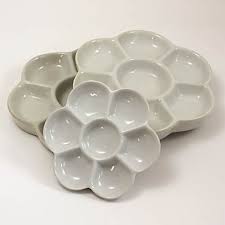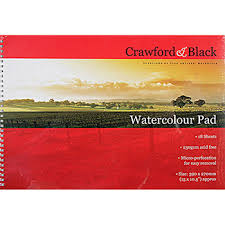
Starting to Paint
When I had the idea in my head to start painting again, I didn’t really know where to begin when it came to buying the right materials. Whether it’s oils, acrylics or watercolours; it can be a minefield choosing the ones that will suit your purposes, with the additional costs being extremely high. Some brushes can cost hundreds of pounds; but you mustn’t let that put you off. There are some really good painting materials that you can purchase in art or stationary shops at really cheap prices; shopping online is even better. You only need the basics to start with, and as you become more familiar with your painting techniques, you will develop your own style and begin to purchase the materials that will suit you better.
The first day I attended my art class I had nothing, only a pencil! I wanted to ask my tutor what the best materials were to buy. I still have them and have added a few more over the past few years, with a couple more sable brushes thrown into the mix which were given to me as presents.
‘The Works’ is a great store that sells cheap reasonable quality art materials that wont break the bank. If you haven’t got one of these stores in your town, you can shop with them online.
Here’s some of the basics you’ll need to get you started:
A pocket set of watercolour half-pans. These are from the ‘Windsor & Newton’, Cotman student range. They are of a lower quality colour pigment, yet still great for the beginner.
I still use these and refill the half pans when I run out. The set includes a small fine brush. As the title explains, they are great for doing sketches outside and will fit inside your pocket. I bought mine from ‘The Range’ store for around £7.99, but shop around and have a look online at Amazon etc.
You will also need a HB pencil and a putty rubber. Putty rubbers are worth buying as they are delicate enough not to ruin your watercolour paper. They are very light to use and malleable. You can buy these for around £2 from stationary shops like WH Smith or art shops, or the cheaper stores like ‘The Works’.
You can buy these for around £2 from stationary shops like WH Smith or art shops, or the cheaper stores like ‘The Works’.
Next on the list is a palette in which to mix your paint.
One with compartments is better as you can keep the individual colours from running into each other, however, a white ceramic plate is suitable. The palette can be bought quite cheaply from the same stores or online for around £1.
Now it’s the brushes. Please don’t let the choice of brushes dishearten you. There are so many to choose from with prices ranging from a couple of pounds to the top of the range, which can cost a great deal. Firstly, you need to buy the cheapest you can find.
If this is your first time taking up the hobby, you may find that you don’t actually take to it, so what’s the point in spending vast amounts of money when in 6 months time you may lose interest. ‘The Works’ again have a good range of cheap synthetic brushes for a range of painting mediums. You can buy then individually or in packs of about 5, which includes the most useful ones. I bought a pack to begin with which cost me about £5. If you don’t fancy doing this, just buy a couple; maybe a number 8 medium size and a larger one for washes. You will already have the small one from your painting set.
Watercolour papers come in all thicknesses and textures and it can become quite confusing choosing the best one to suit your needs. ‘Windsor & Newton’, or ‘Daler Rowney’, generally offer a good range of quality papers, but for the beginner it’s best to use the cheaper range. For practice, I use a cheap pad of watercolour paper by ‘Crawford & Black’.
The pads come in A5 books of 18 sheets priced at £3, and A4 books of 12 sheets priced at £2. These are excellent value for money. Once again though, you need to shop around. ‘Reeves’ also produce a good economy brand of art materials.
Finally, I’ve included a recommendation for the best book I’ve ever found on the market for learning to paint with watercolours. There are countless tutorial books you can purchase giving you the know how on beginning your hobby of painting, but after reading lots and lots of them, and getting bogged down with technique fatigue, this is the one I favour. It is by a very famous artist called ‘Hazel Soan’, by Collins Gem.
It covers literally everything from the beginning from mixing colours to painting landscapes. It gives tutorials on painting the most basics of anything in 10 minutes!
It’s brilliant and the only book you’ll need as a novice painter. It’s also small enough to fit in your pocket. I carry mine around in my handbag and take a quick look when I have a stop at a coffee shop. It is priced at £4.99, but I bought mine from Amazon for £2.99.
I think painting is a lovely way to relax. Some people are put off by it, because they feel that to be proficient at painting it is necessary to be good at drawing etc.This is ridiculous. It’s all about enjoying yourself and being expressive. I hope this post helps if you decide to pursue the hobby.
Give it a go!
Happy painting x Pip





One Comment
Kelly Diane
This is a really interesting post. I used to love painting, especially watercolours but haven’t done it for a few years now. You’ve included some great essentials in this post.